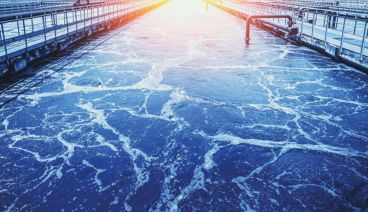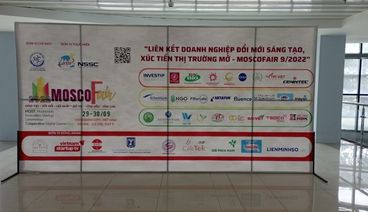WHAT SHOULD ENTERPRISES NEED TO KNOW WHEN INVESTING WASTE WATER TREATMENT SYSTEM?
Step 1: Learn about the origin and nature of wastewater treatment
Wastewater = Water + Pollutants. Wastewater treatment is essentially the reduction or removal of pollutants in the water.
The degree of pollution is expressed in the amount of pollutant components and the concentration of those pollutants in the water. The higher the level of pollution, the more complex the wastewater treatment solution is fundamentally.
Pollutants in water are classified according to the following groups:
- Organic/Inorganic ingredients
- Soluble/insoluble ingredients (suspended in water)
- Nutritional composition, including Nitrogen & Phosphorus
- Fats: animal and vegetable sources or mineral fats
- Heavy metal
- Salt, acid
- Toxic ingredients such as pesticides
- Garbage of large size
Pollution can also be assessed by lack or disappearance of oxygen in the water.
|
Type of Wastewater |
Treatment standards to be met |
|
Domestic wastewater |
QCVN 14:2008/BTNMT |
|
Medical waste water |
QCVN 28:2010/BTNMT |
|
Industrial wastewater |
QCVN 40:2011/BTNMT (Some manufacturing industries such as paper, animal husbandry, etc. have their own standards) |
Step 2: Carry out wastewater sampling and testing to determine the pollutant components in the wastewater source and the pollutant concentration of each component (also known as pollution parameters) according to the parameters specified in the relevant QCVN (Vietnam standard)
Step 3: Choose a treatment method
|
Treatment methods |
Common treatment methods |
|
|
|
Physical method |
Sedimentation Floatation Filter Absorption Ion Exchange Electrolysis |
|
|
Chemical method |
Coagulation, Flocculation Precipitation Oxidization Neutralization Absorption |
|
|
Microbiological/ biochemical methods |
The microbiological or biochemical method is a chemical reaction using enzymes in living microorganisms (activated sludge). Most microorganisms are used in anaerobic (microorganisms in the absence of oxygen), aerobic (microbiology in the presence of oxygen) reactions. |
Step 4: Select technology
With each method or treatment method, there are many different types of technology and equipment. For example, the physical deposition method can use vertical sedimentation, horizontal sedimentation, laminar sedimentation, and centrifugal sedimentation. The filter method can be selected by material filtration (sand, carbon), filter by precision mechanical equipment, filter by membrane filter, etc.
Depending on the conditions and needs of the business as well as the characteristics of the wastewater to choose the most suitable technology.
Some criteria businesses need to keep in mind when choosing wastewater treatment technology:
Technical criteria
- Wastewater treatment efficiency (compliance with QCVN)
- Treatment efficiency/investment cost
- Lifespan or durability of buildings and equipment
- System building time
Economic criteria
- Cost of construction and installation of equipment (calculated by investment rate): The cost of building a domestic wastewater treatment plant includes the cost of construction materials, labor, transportation, and some other ancillary costs. This cost can be expressed in terms of construction investment per unit of wastewater.
- Cost of operation, maintenance, and repair (calculated in VND/m3 of wastewater): The cost of operating the treatment system includes: cost of electricity, water, chemicals, and labor. Maintenance and repair costs are costs used for maintenance of the system (such as replacement of spare parts and equipment in maintenance, repairs, filter replacement if any).
Environmental Criteria
- Rate of use of raw materials and energy
- Reusability of water after treatment
- Degree of sludge and exhaust treatment
- Level of unsafety to the operator, the environment, and solutions to prevent and overcome problems when incidents occur
- Requirements on human resources to manage and operate the wastewater treatment system
Step 5: Popular waste treatment process

A wastewater treatment process usually includes the following treatment steps:
Step 1: Collect wastewater from discharge points (if there are many discharge points)
Step 2: Separating coarse garbage (large particles, large solids)
Step 3: Contain wastewater after collection, stabilize the flow and concentration of pollution in the water tank, also known as the conditioning tank.
Step 4: Primary treatment aka Pre-treatment, e.g. sedimentation/sand, PH neutralization, temperature regulation, grease removal, etc.
Step 5: Microbiological treatment (applied when wastewater has many organic pollutants). Microbiological processes usually include part or all of the following steps: anaerobic microbiological reactions, anaerobic microbiological reactions, and aerobic microbiological reactions.
Step 6: Level 2 sedimentation or filtration to remove residual activated sludge mixed in wastewater after microbiological treatment step.
Step 7: Disinfect to remove pathogenic bacteria
Step 8: Design a tank to store residual sludge generated from the treatment system, including sludge and activated sludge
Step 9: Design the sludge return pipelines
Step 10: Electrical control system






